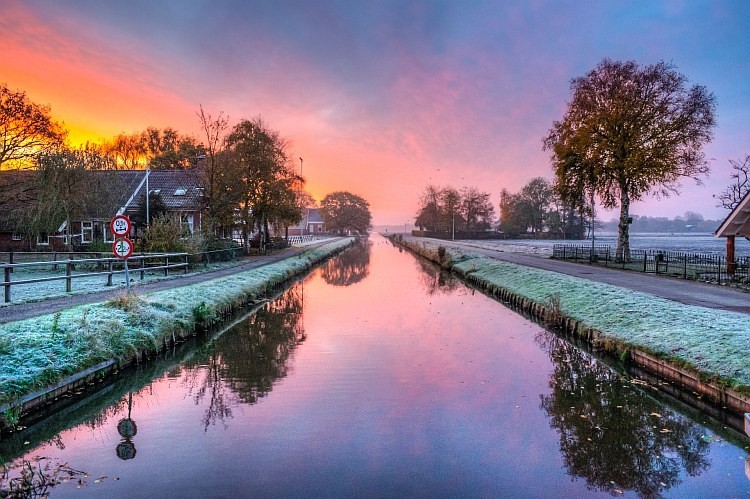HDR (High Dynamic Range) is now a must-have TV feature. TVs that support this feature typically offer brighter highlights and a wider range of color detail for a more overall picture. Here’s what you should know about this modern picture technology.
Article in cooperation with https://primemovies.pl/

High Dynamic Range image(HDR )
It is a technique used in imaging and photography to reproduce a greater dynamic range of brightness than is possible from standard digital imaging or photographic techniques.The goal is to represent a similar range of luminance that occurs in the human visual system .The human eye, through adaptation from the iris, constantly adjust to accommodate the wide range of luminance present in the environment. The brain continuously interprets this information so that the viewer can see over a wide range of lighting conditions.

High Dynamic Range Photohraphy, High Dynamic Range rendering, High Dynamic Range display – what is it all about?
High Dynamic Range display or HDR on TV
The contrast of a TV is the difference between how dark and how bright it can be. Dynamic range describes the extremes of this difference and how much detail can be shown between them. Basically, dynamic range is the contrast of the display, and HDR is an extension of this contrast.However, simply increasing the range between light and dark is not enough to improve image detail. Regardless, a panel can reach 100 cd/m 2 (relatively weak) or 1,000 cd/m 2 (very bright), and whether its black levels of 0.1 (washed almost gray) or 0.005 (very dark), can ultimately show only so much information based on the received signal.
Is this new technology worth the hype? In two words: largely yes. I’m pretty jaded when it comes to new TV technology, and I’m very excited about HDR.
- HDR requires both a TV that supports the feature and special HDR content.
- HDR images can get brighter areas with higher contrast.
- Many HDR TVs also have a wide color gamut, which provides deeper, richer colors with content that supports it.
- HDR on a budget HDR TV and HDR on an expensive HDR TV can look very different, and on some budget HDR TVs HDR can even look worse than non-HDR.
- Today, almost all HDR content is available in 4K resolution.
- There are many HDR formats, including “generic” HDR (a.k.a. HDR10), Dolby Vision, HDR10 + and more.
Check also: GPT Chat!
What is HDR and do you need it? [EN]
What is HDR used for? That is, High Dynamic Range
In recent years, more and more people are interested in HDR, or High Dynamic Range. This is a technique that allows you to get better and more realistic photos. In this article, I will try to explain what HDR is used for and how it can be used. HDR stands for High Dynamic Range. It means high dynamic range. Unlike a regular photo, HDR allows you to capture more detail in the light and dark parts of the frame.

This is made possible by the fact that HDR consists of several photos with different exposure times, which are then combined into a single image. This makes it possible to capture more detail in the light and dark parts of the frame. It is worth knowing that HDR is not only a photographic technique, but also a video one. It can be used in both photography and filming. HDR allows for better and more realistic images, making it increasingly popular. If you want to learn more about HDR, I invite you to watch my YouTube video “What is HDR and what is it used for?”.
What is the difference between Full HD and 4K?
Full HD and 4K are two popular video standards. 4K is newer and offers better picture quality than Full HD. 4K is four times better than Full HD and produces a more detailed image. 4K is also higher resolution than Full HD and gives a clearer picture.
Is HDR necessary? What are its advantages?
Recently, HDR, or High Dynamic Range, has become one of the most popular topics among photographers. HDR is a technique that involves combining several photos with different exposures into one. This produces a photo with very high contrast and a wide tonal range. HDR is particularly useful in landscape photography, where it is often difficult to capture all the details – one side is very bright and the other very dark. However, the HDR technique has its drawbacks. First of all, it is a time-consuming process – it takes a long time to combine several photos into one. In addition, HDR can often be exaggerated and unnatural. Therefore, you need to know how to work with it to get good results.
In conclusion, HDR is a technique that has its advantages and disadvantages. It is useful in landscape photography, but you need to learn it to get good results.
Which technology is better? HDR or 4K? Both have their advantages, but which is better? Let’s check it out!
HDR (High Dynamic Range) is a technology that allows you to display more colors and better image quality. HDR allows better reproduction of contrast and light, making the image more realistic. HDR is now available on many TVs and mobile devices. 4K (Ultra HD) is a technology that allows images to be displayed at 4 times the resolution of standard HD. 4K offers better picture quality, higher resolution and more detail. 4K is now available on many TVs and mobile devices.
HDR and 4K are both very good technologies that have their advantages. HDR offers better contrast and light reproduction, making the picture more realistic. 4K offers better picture quality, higher resolution and more detail. Both technologies are available on many TVs and mobile devices.
Sources:
https://pl.wikipedia.org/wiki/Obraz_HDR
https://www.pcmag.com
https://www.cnet.com
https://www.youtube.com






